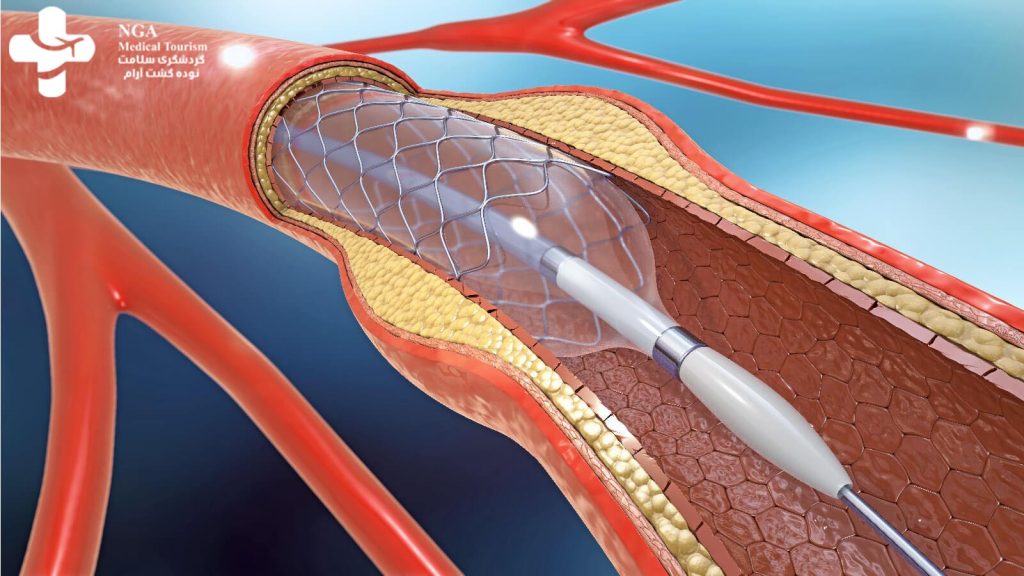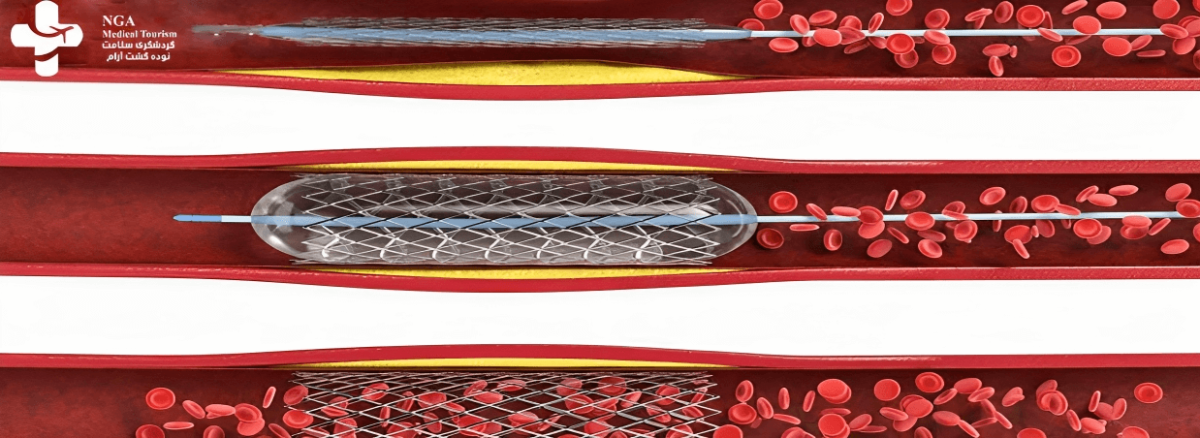- 19 June, 2023
- blog
Coronary Angioplasty
The cost of coronary angioplasty in Iran can vary depending on several factors, such as the hospital or clinic where the procedure is performed, the experience and qualifications of the cardiologist, the type of stent used, and any additional medical care required during or after the procedure.
Coronary Angioplasty In Iran
Best coronary angioplasty surgeon in Iran
For the best coronary angioplasty in Iran, we recommend selecting from our list of top-rated clinics. These clinics offer exceptional care and utilize advanced techniques for coronary angioplasty procedures. With highly skilled doctors and cutting-edge facilities, these clinics prioritize delivering optimal outcomes. At these clinics, you can expect personalized attention and the utmost level of care. They are renowned for their dedication to patient safety and satisfaction. By choosing one of these top-rated clinics, you can ensure that you receive the best possible care for your coronary angioplasty procedure.
Coronary angioplasty cost in Iran
The cost of coronary angioplasty in Iran is significantly lower compared to other countries, and this can be attributed to several factors:
- Availability of numerous coronary angioplasty hospitals in Iran: The high number of hospitals specializing in coronary angioplasty in Iran creates a competitive environment, leading to more affordable prices.
- High demand for coronary angioplasty in Iran: The large number of applicants seeking coronary angioplasty in Iran contributes to the overall lower cost. This increased demand allows hospitals to offer the procedure at a more accessible price range.
- Variation in cost depending on the procedure and hospital: The cost of coronary angioplasty in Iran can vary depending on the specific procedure required and the hospital chosen. Different hospitals may have different pricing structures based on their facilities, reputation, and expertise.
On average, the cost of coronary angioplasty in Iran is around $2500. However, it’s important to consult with the hospital and healthcare professionals for accurate pricing information tailored to your specific case.
Coronary angioplasty cost in Iran in comparison with other countries
Coronary angioplasty costs vary significantly across different countries. Here is a brief summary of approximate costs:
- United States: $28,000
- Europe: $15,000 – $25,000
- Thailand: $18,000
- Turkey: $5,500
Please note that these figures are approximate and can vary based on various factors. It’s advisable to consult with healthcare providers for accurate pricing information specific to your situation.

Best coronary angioplasty surgeon in Iran
Iran is a popular destination for coronary angioplasty due to several factors. These include:
- Experienced doctors: Iranian specialists and surgeons have a track record of performing a high number of successful coronary angioplasty procedures.
- Low cost: The cost of coronary angioplasty in Iran is significantly lower compared to other countries, making it an affordable option for patients.
- Quality healthcare: Coronary angioplasty hospitals in Iran adhere to modern European standards, ensuring high-quality operations and patient care.
- High surgery success rates: Iranian doctors have excellent records and high success rates in performing coronary angioplasty surgeries.
- Travel advantages: Patients benefit from the low cost of accommodation in Iran, making it a cost-effective choice for medical tourism.
Overall, Iran offers a combination of experienced doctors, affordable prices, and quality healthcare, making it an attractive option for individuals seeking coronary angioplasty procedures.
How long should I stay for coronary angioplasty in Iran?
About Coronary Angioplasty
Angioplasty, either alone or with intracoronary stenting, offers several benefits for patients, including:
- Improved blood circulation: The procedure opens up tight and blocked arteries, enhancing blood flow to the heart.
- Lower complication rates: Local anesthesia used during angioplasty carries fewer risks compared to general anesthesia, reducing the likelihood of complications.
- Quick recovery: Patients can resume their regular activities relatively soon after the procedure, leading to a faster recovery compared to open-heart surgery.
- Relief of angina pain: Angioplasty can help alleviate angina pain, improving the overall prognosis for patients with unstable angina.
- Reduced need for bypass surgery: The use of angioplasty has significantly reduced the number of patients requiring open-heart surgery for coronary artery bypass grafting, with less than 1% of cases necessitating this procedure.
Types of coronary angioplasty
Balloon angioplasty involves using a catheter with a small balloon to open blockages within arteries. This procedure is commonly performed in various locations:
- Carotid artery angioplasty: It is a minimally invasive procedure where a catheter is guided from the groin to the carotid arteries to treat blockages in the neck.
- Cerebral angioplasty: Similar to cardiology procedures, it is used to open partially blocked vertebral and carotid arteries in the neck, specifically in the brain.
- Coronary artery stent: A tiny coil is expanded inside a blocked artery to keep it open and improve blood flow to the heart.
- Laser angioplasty: In this method, a laser is utilized to vaporize blockages within arteries.
- PTA of the Femoral Artery: This newer and minimally invasive procedure aims to restore blood flow to the lower leg by opening the blocked or narrowed femoral artery, without the need for open surgery.
Recommended for
- Patients with narrowed or hardened arteries around the heart: These individuals may have a condition called coronary artery disease, where the blood vessels supplying the heart muscle are obstructed or narrowed by plaque buildup.
- Patients with coronary heart disease or angina: Coronary heart disease refers to the narrowing or blockage of the coronary arteries, which can lead to chest pain (angina) and decreased blood flow to the heart. Angioplasty and stenting can help alleviate these symptoms and improve blood circulation.
Patients who need emergency treatment following a heart attack: During a heart attack, a coronary artery becomes completely blocked, leading to the death of heart muscle tissue. Immediate intervention, such as angioplasty and stenting, is crucial to restore blood flow and minimize further damage to the heart.

Best coronary angioplasty surgeon in Iran
Before Coronary Angioplasty
Before undergoing angioplasty, patients typically undergo angiography to visualize the blood vessels and identify blockages. They are admitted to the hospital the night before and instructed not to eat or drink after midnight. The doctor may prescribe blood-thinning medications like aspirin. These preparations help assess the patient’s condition and minimize risks during the procedure.
During Coronary Angioplasty
The groin is the most common site for catheter insertion during angioplasty, although the arm or wrist can also be used. After administering local anesthesia, a small incision is made. Patients are advised to cooperate with the doctor and follow their instructions, which may involve changing positions during the procedure. Temporary blockage of blood flow to a part of the heart using the balloon may cause some chest discomfort, which is a normal occurrence during the procedure.
Recovery
After the angioplasty procedure, the doctor typically prescribes medications that need to be taken according to the given schedule. Patients are advised to take a week off from work to allow for proper recovery. It is strongly recommended to quit smoking, maintain healthy blood cholesterol levels, manage weight within a healthy range, control other conditions like diabetes or hypertension, and engage in regular exercise. These lifestyle modifications contribute to better overall health and aid in the long-term success of the procedure.
Best coronary angioplasty hospital in Iran
With over 35,000 patients, both Iranian and foreign, undergoing angiography procedures in Iran annually, the country has established itself as a leading destination for this medical service in the Middle East. Renowned for its skilled specialists and surgeons, Iran offers top-notch hospitals for angiography. Some of the best hospitals for angiography in Iran include:
- Treata Professional Hospital
- Gandhi Hospital
- Moheb Mehr Hospital
These hospitals are known for their expertise, advanced facilities, and commitment to providing high-quality care to patients undergoing angiography procedures.

FAQ about Coronary Angioplasty
Iran is renowned for its skilled doctors and modern medical facilities, offering safe and successful procedures. With advanced technology and adherence to international standards, Iran provides high-quality healthcare services. Iranian doctors are highly experienced and dedicated to patient care. Medical facilities in Iran boast state-of-the-art equipment, ensuring the utmost safety and quality. Patients from around the world choose Iran for its excellence in healthcare.
Coronary angioplasty in Iran is known for its affordability compared to many other countries. The cost of the procedure in Iran is significantly lower, making it a more accessible option for patients seeking coronary angioplasty. Despite the lower cost, the quality of care and expertise provided by Iranian medical professionals remain high, attracting patients from different parts of the world.
Most patients can resume normal activities within a week after coronary angioplasty, but recovery time varies. Individual factors and the complexity of the procedure can affect the duration. Following post-operative instructions and attending follow-up appointments are important for a smooth recovery.
Percutaneous coronary intervention, also known as angioplasty, is as effective as coronary artery bypass grafting in treating patients with refractory angina who are at high risk of adverse outcomes, a new US study has concluded.
Bypass surgery is generally considered the better option in cases where the patient’s arteries are blocked in multiple areas, or where their left main coronary artery is narrowed.
Angioplasty can be done at any age, but after the age of 80, there are concerns about the risks of the procedure. The aging patient often has other heart problems or health issues that must be considered.
But this 10% to 15% rate of angioplasty failure represents 50,000 to 75,000 patients per year. Some stenoses simply fail to improve after dilatation, and some stenoses may worsen after the angioplasty procedure.







